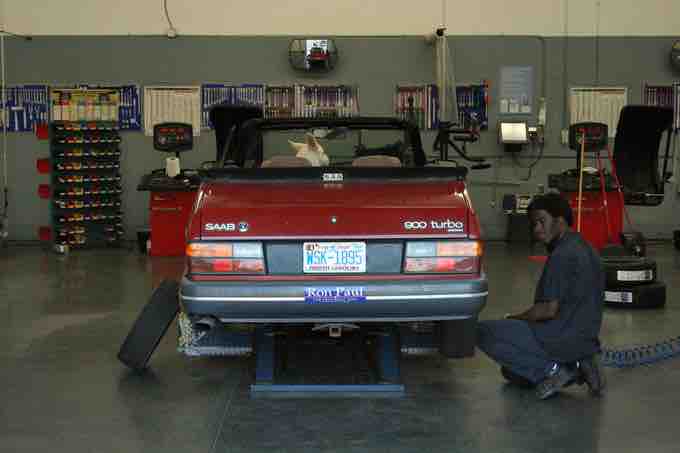Valuing Repairs, Maintenance, and Additions
Betterments or improvements to existing plant assets are capital expenditures because they increase the quality of services obtained from the asset. Because these add to the service-rendering ability of assets, firms charge them to the asset accounts.
For example, installing an air conditioner in an automobile that did not previously have one is a betterment. The debit for such an expenditure is to the asset account, Automobiles.

Car Repairs
Cars require regular maintenance. Such contingent liabilities can be estimated reliably based on historical cost and readily available information.
Occasionally, expenditures made on plant assets extend the quantity of services beyond the original estimate but do not improve the quality of the services. Since these expenditures benefit an increased number of future periods, accountants capitalize rather than expense them. However, since there is no visible, tangible addition to, or improvement in, the quality of services, they charge the expenditures to the accumulated depreciation account, thus reducing the credit balance in that account. Such expenditures cancel a part of the existing accumulated depreciation; firms often call them extraordinary repairs.
If an expenditure that should be expensed is capitalized, the effects are more significant. Assume now that USD 6,000 in repairs expense is incurred for a plant asset that originally cost USD 40,000 and had a useful life of four years and no estimated salvage value. This asset had been depreciated using the straight-line method for one year and had a book value of USD 30,000 (USD 40,000 cost—USD 10,000 first-year depreciation) at the beginning of 2010. The company capitalized the USD 6,000 that should have been charged to repairs expense in 2010. The charge for depreciation should have remained at USD 10,000 for each of the next three years. With the incorrect entry, however, depreciation increases.
Deferred maintenance is the practice of postponing maintenance activities such as repairs on both real property (i.e. infrastructure) and personal property (i.e. machinery) in order to save costs, meet budget-funding levels, or realign available budget monies. The failure to perform needed repairs could lead to asset deterioration and, ultimately, asset impairment. Generally, a policy of continued deferred maintenance may result in higher costs, asset failure, and in some cases, health and safety implications.
Valuing Asset-Related Costs
Under US GAAP (FAS 157), fair value is the amount at which an asset and its related costs could be bought or sold in a current market transaction between willing parties or transferred to an equivalent party other than in a liquidation sale. Therefore, asset repairs and maintenance are expensed on the income statement at the market value paid for the services rendered. Asset additions/improvements are capitalized to their respective asset accounts on the balance sheet at the market value of the addition.